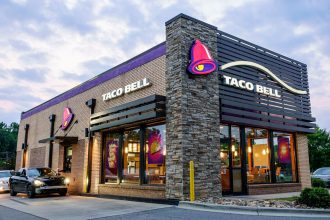As Secretary of State Marco Rubio heads to Panama on his first official foreign trip, reassumption of American control over the Panama Canal Zone is on the agenda. With Panama refusing to back down, a struggle to control this key trade, security and immigration chokepoint appears certain. Few realize that the future of the Panama Canal is on the line, and that a conflict may endanger the Canal’s operations.
It might be hard for outside observers to understand what the Trump Administration is using to justify an uncompromising approach to the small Central American country. But, after handing over control of the U.S.-built canal to Panama in 1999, a kind of “buyer’s remorse” has set in, pushing some U.S. national security thinkers to mull alternatives.
The irritants at the Panama Canal have been constant. American national security observers, knowing that around 72 percent of the transiting ships are “either going or coming from U.S. ports,” have routinely chafed at China’s gradual encroachment upon both Panama and upon canal operations.
Others in the U.S. have realized that U.S. control of the Panama Canal Zone may have served to deter northward migration from South America, reducing immigration pressure on America’s southern border. As interceptions of migrants from Venezuela, Colombia, Peru and Ecuador increase on America’s Southern border, America’s appetite for halting these migrants at the dangerous jungles of Panama’s Darien Gap region, along Panama’s southern border, has increased.
These concerns have combined with desperation, and a sense, in come national security circles that time is getting short, and that America should act while it can still do so.
The window for America to claw back the Panama Canal Zone is closing. With China furiously expanding their fleet of long-range blue water amphibious assault platforms and adding to their strategic air mobility capabilities, America’s ability to conduct uncontested military operations in South America is coming to an end.
At sea, the pace of China’s amphibious fleet growth is particularly impressive, with four formidable Type 075 big-deck amphibious assault ships—each capable of carrying between 800-1600 Marines–rolling out of Chinese shipyards between 2019 and 2023. The first of a larger big-deck assault ship class, the 40,000-ton Type 076, was launched in December 2024.
In a few years, as China trains and tightens up a potentially wide-ranging network of South American and Caribbean allies, any effort to pressure Panama will need to be done with an eye towards China’s military.
China will soon deploy and operate throughout the region, potentially deterring America in America’s own back yard. With a Chinese fleet in South American waters, regional police actions become global crises.
With time short and an unpredictable American president in the first days of his four-year term, Marco Rubio’s conciliatory rhetoric in flowery Wall Street Journal opinion columns will be backed with the threat of force. But if Panama resists, refusing to operate the canal or sabotaging the canal during a contested U.S. takeover, America must gird for a months-long—or even years-long–shutdown of the Panama Canal.
What If The Panama Canal Closes?
The economic consequences of an extended shutdown of the Panama Canal are enormous. If the Panama Canal shuttered, $270 billion in U.S. cargoes will need to take a far longer route to market, and supply chains will demand rewiring in real time.
Immediate national security challenges might be even worse. Sabotage or a contested shutdown, coming after Panamanian resistance to American military intervention, stands to be an opening salvo in what would likely be a drawn-out and costly counter-insurgency. Securing the Canal is hard enough, but securing the entire country and converting it into a low-cost migration barrier will pose a real challenge.
At sea, if the Panama Canal is closed, the U.S. Coast Guard will face enormous disruption. 20 of the Coast Guard’s mid-endurance cutters—almost the entire fleet–are based on the East Coast, and five of 11 big National Security Cutters will operate out of the Coast Guard’s emerging superbase in South Carolina. These ships spend a lot of time in the Pacific, hunting drug smugglers and rampaging Chinese fishing fleets.
Without the ability for U.S. military ships to transit through the Panama Canal, the eastern Pacific risks becoming an unregulated “Wild West.” There’s just no way for the Coast Guard to transfer more large ships to the Pacific. The mid-endurance cutter fleet is already pushing beyond their original service lives, and, even if they did have the “legs” to go around South America without requiring a port call, the wear and tear of the transit would quickly break the already old and hard-run cutters. An unexpected set of home-port shifts would stress the force, and, with Pacific Area Coast Guard bases already at capacity, the Department of Homeland Security has few good options.
The U.S. Navy would struggle as well, balancing the need to move ships from one ocean to another. Of course, the Navy has contingency plans for a Panama Canal shut-down, but, if that shut-down comes at the expense of goodwill from Argentina and Chile (America’s partner for refueling vessels in the Southern oceans), the U.S. Navy will need to scramble to find fuel and logistical support for any vessel transits around South America.
Adding to the challenge, the Navy might also be tapped to fill in for the Coast Guard, conducting long constabulary patrols. An unpopular duty in the best of time, the “warrior culture” oriented Department of Defense may get restive if tasked to sit in the Eastern Pacific, boarding ships and watching fishing boats.
Both the Coast Guard and the Navy would be challenged by a relative lack of West Coast maintenance support. The Coast Guard’s primary maintenance yard is in Baltimore, Maryland–effectively unreachable without the Panama Canal. The Navy would also struggle to find enough West Coast shipyards to handle the increased workload.
All of that bakes down into a massive, multifaceted challenge. Geopolitically, a long shut-down of the Panama Canal would—outside of causing opprobrium throughout the globe—offer China an enormous opportunity to carry out some mischief in their end of the Pacific, either by military action of their own or by taking advantage of the diplomatic uproar to reposition themselves as a bulwark against an expansionist America.
Too few realize that, with Marco Rubio’s visit to Panama, the future of the Panama Canal is on the line. Conflict may be inevitable, and that conflict may shut the Panama Canal for some time.
Read the full article here





